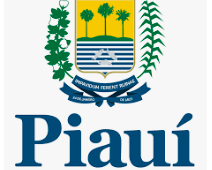Tempo de leitura: 3 minutos
Dr. Yulia Levashova, Prof. Julien Chaisse and Dr. Ilia Rachkov will be editing a TDM Special Issue on the interaction between international investment law and special economic zones (SEZs).
The number of special economic zones (SEZs) is growing, and so is the attention of policy makers, lawyers, and academics in both the developed and the developing world. SEZs are designated areas established by states that have the goal of boosting economic development and attracting capital, technology and innovation by offering economic and fiscal benefits to companies, including foreign investors.
The 2019 World Investment Report (prepared by the UNCTAD) estimates that there are ‘nearly 5,400 zones across 147 economies today, up from about 4,000 five years ago, and more than 500 new SEZs are in the pipeline.’ There are many variations of SEZs. Some of them are organised as free trade areas that focus on integrated development of large areas in a variety of industries; others function as export processing zones that are designed to simplify administrative procedures outside the country’s customs territory.
In addition, innovative varieties of SEZs have developed that have, for example, the goal of advancing high-tech technology or the implementation of specific Sustainable Development Goals (SDGs). The geographical spectrum of SEZs is also incredibly vast and can be found almost everywhere in the world. However, according to the 2019 World Investment Report, the highest number of SEZs can be found in ‘China, the Philippines, India, the United States, the Russian Federation, Turkey, Thailand, the Dominican Republic, Kenya and Nicaragua, in that order.’ In addition, SEZs are being rapidly developed in African countries and in the former Soviet Republics; SEZs will also play a key role in the development of the Belt and Road Initiative (BRI).
SEZs and international investment law interact in several different ways. International investment agreements (IIA) are, similarly to SEZs, concluded by states with the goal of attracting foreign investors. IIAs make no distinction between foreign investments and investments made in SEZs. Consequently, foreign investors may initiate investment claims against a host state for mistreatment in an applicable SEZ. In the past, foreign investors have challenged the revocation of fiscal and tax benefits that were provided by a state’s authorities under the SEZ’s regime. In a number of investment cases, tribunals have also dealt with the issue of attribution by assessing whether a SEZ’s authority qualifies as a state organ for the purpose of an applicable IIA.
The relationship between international investment law and SEZs present a number of legal and policy issues in relation to their compatibility and consistency. Some of these issues, e.g. the protection of the legitimate expectations of an investor resulting from the benefits applicable to SEZ’s investments are typical for investment law. However, the notion of attribution in relation to SEZ’s authorities raises more specific challenges concerning the institutional and legal framework of SEZs and its interaction with the central government of a state where the SEZ is situated.
At the same time, the growth of a new generation of IIAs with elaborated definitions and investment protection provisions that integrate sustainable development objectives, and the expansion of modern SEZs with a sustainable focus offers possibilities for positive and harmonious interaction. Furthermore, the establishment of specialised dispute resolution mechanisms for SEZs (e.g. the Qatar and Dubai financial centers) provides opportunities for effective procedures for dispute settlement between foreign investors operating in SEZs. This special issue endeavours to analyse the many types of legal and policy issues resulting from the increasingly complex relationship between investment law, dispute resolution, and SEZs.
Proposals (200 words) and authors’ profiles (150-200 words) should be submitted to all three editors no later than 1 October 2019. Please CC info@transnational-dispute-management.com when submitting your materials. Full papers should be submitted by 30 December 2019. The release of the special issue is planned for the first quarter of 2020. Articles accepted for publication ahead of this schedule can also go through Transnational Dispute Management’s (TDM) online advanced publication process, allowing your work to reach its target audience as soon as the paper completes the peer review and editing process. The layout of the articles should conform to TDM’s submission guidelines available at www.transnational-dispute-management.com/contribute.asp (more information available upon request).






Os comentários foram encerrados, mas trackbacks e pingbacks estão abertos.